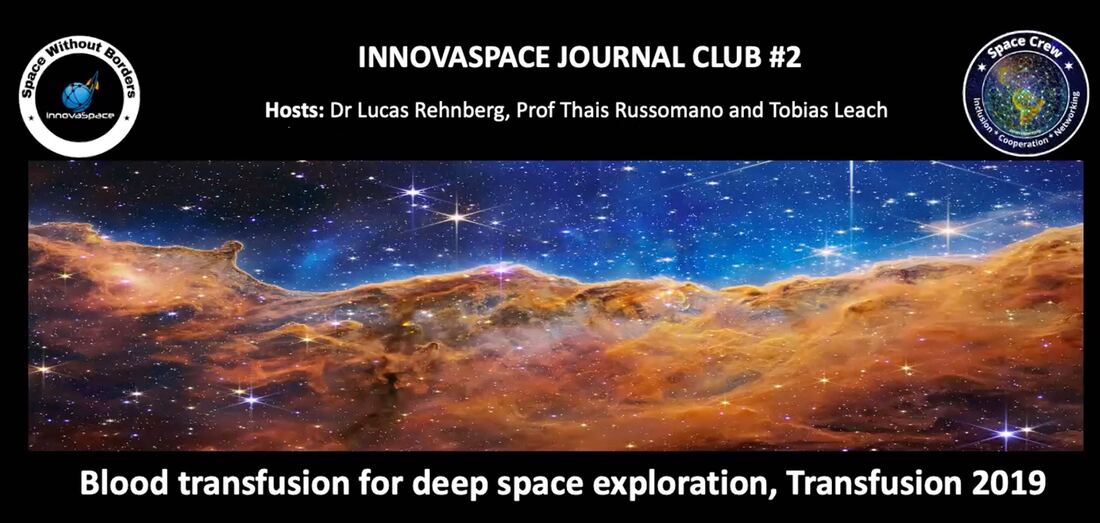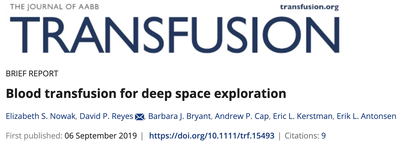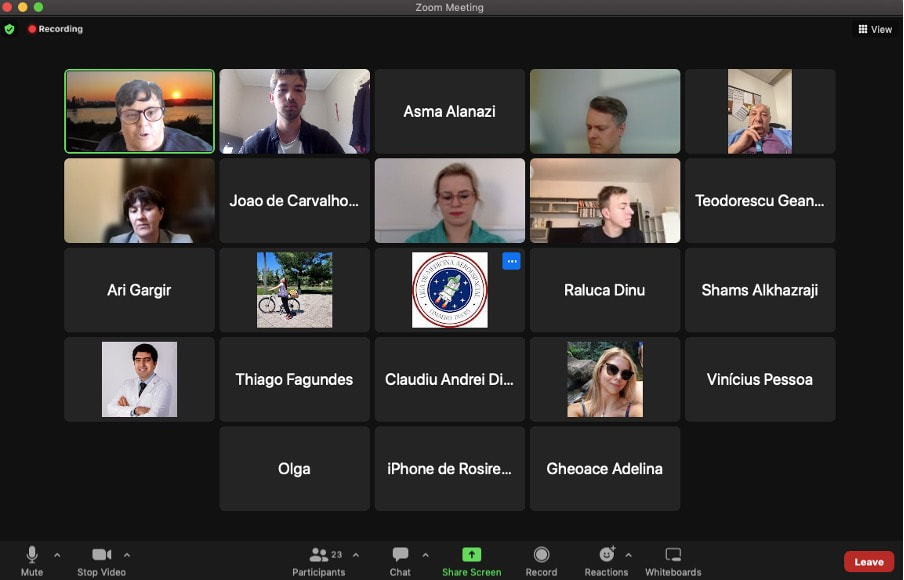Author: Tobias LeachMedical Student, University of Bristol | iBSc Physiology at King’s College London The first edition of the InnovaSpace Journal Club was dedicated to a prospective cohort study on jugular venous flow in astronauts aboard the ISS. From this study, the issue of jugular vein thrombus formation arose, which led to some fascinating discussion on how we could possibly manage and mitigate this novel risk to astronaut health. Therefore, I thought it appropriate to use the second edition of the InnovaSpace journal club to cover the issue of bleeding in space. Major Haemorrhage in space – How can it arise? How can it be managed? Should we worry about it? PAPER PRESENTED & DISCUSSED: We used a 2019 literature review which evaluated different haemostatic techniques in remote environments and proposed a major haemorrhage protocol for a Mars mission. The article itself stressed that while the estimated risk for major haemorrhage on a Mars mission was not very high, there were still many possible causes for a big bleed such as trauma and high dose radiation. Additionally, the changes to circulatory physiology observed in microgravity may mean astronauts are less able to cope with even small amounts of blood loss. While the literature search itself left a lot to be desired as only 3 of the 27 papers were randomised controlled trials (RCTs), the results were interesting. Firstly, we outlined how major haemorrhage is managed in a hospital on Earth and why, due to restrictions in mass and shelf-life of blood products, we would be unable to do the same thing on a mission to Mars. We then looked at the haemostatic techniques used in remote environments. These included, Lyophilised plasma, Haemoglobin-based oxygen carriers (artificial blood) and Whole fresh blood. Each technique has its own advantages and disadvantages. The authors devised the ‘Floating blood bank’ protocol using Whole fresh blood directly supplied from a crew member in-situ. The discussion afterwards featured doctors and medical students from Brazil, UK, Israel, Saudi Arabia and Romania and covered topics such as – How does space affect the coagulation cascade? How physiologically does space makes us more prone to Haemorrhagic shock? Should blood group be part of the selection criteria for crew? How should we weigh up the danger of physiological compromise from bleeding and a transfusion reaction? How do we weigh the threat of bleeding against clotting? Fortunately, there was a physician present with expertise in artificial blood which greatly enriched the discussion. While this paper is obviously limited by the issue of sample size (which plagues all space health research) and the extrapolation of results from remote terrestrial environments to the extra-terrestrial environment, it still provides a foundational guide to how we could manage major haemorrhage in space. Further research could be utilised in the future to plug the gaps in our knowledge - how is the coagulation cascade effected by microgravity? How much blood volume does the human body need to lose in space before they go into shock? Are there alternative blood products not yet considered? Missed the discussion? Catch up below with InnovaSpace YouTube videos! Sign up to our social media (@InnovaSpaceNews) for future Journal Club dates. Comments are closed.
|
Welcometo the InnovaSpace Knowledge Station Categories
All
|
InnovaSpace Ltd - Registered in England & Wales - No. 11323249
UK Office: 88 Tideslea Path, London, SE280LZ
Privacy Policy I Terms & Conditions
© 2024 InnovaSpace, All Rights Reserved
UK Office: 88 Tideslea Path, London, SE280LZ
Privacy Policy I Terms & Conditions
© 2024 InnovaSpace, All Rights Reserved





 RSS Feed
RSS Feed